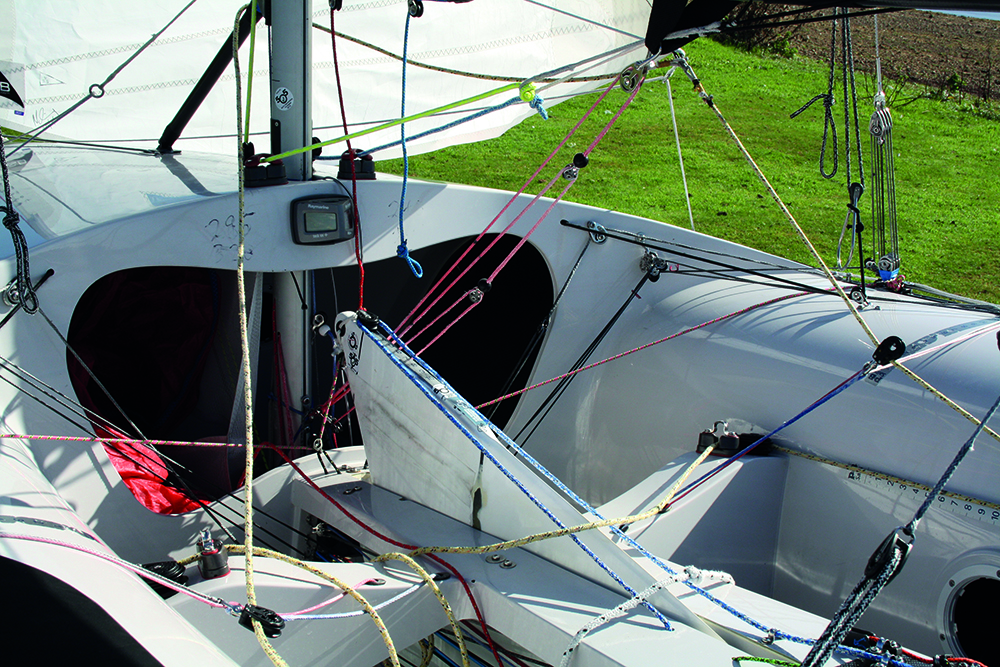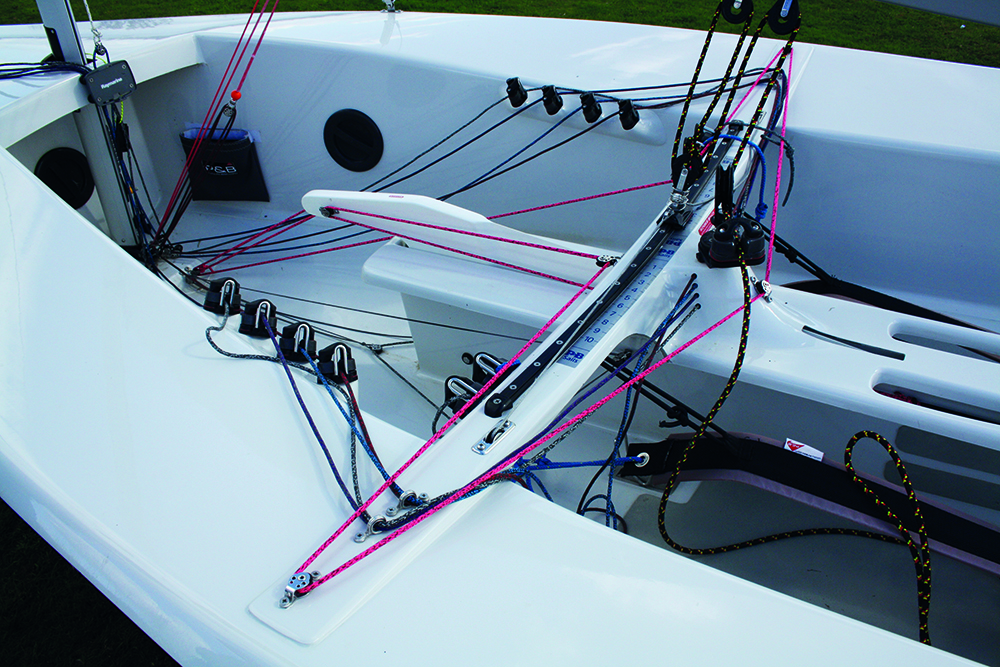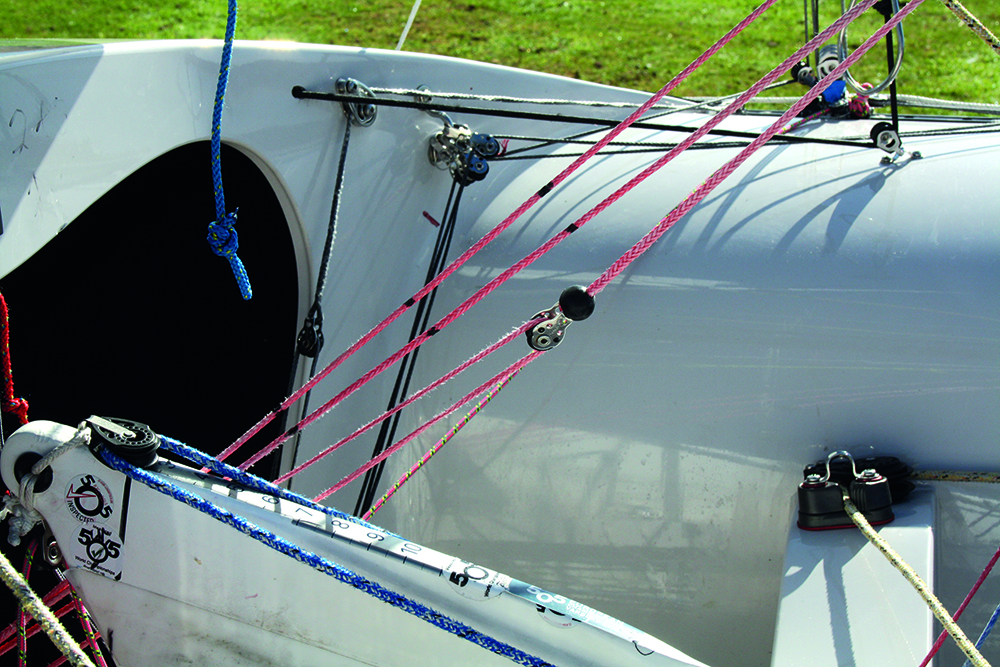Foils With Ian Pinnell
Book Extract
FOILS
The rudder wants to be as small as you can handle, to give less drag. It must be stiff.
The centreboard should be stiff in light / medium winds but have enough flex to depower in a gust. How much it needs to flex depends on your crew weight – the lighter you are the more it should flex. Check this by clamping the board, hanging a 15 kg weight on the tip and comparing it with others. The spec of the laminate alters the board’s stiffness. If yours turns out to be the wrong stiffness for your weight, you may need a new board.

Checking centreboard stiffness
Think long and hard about the slot gasket, which is vital for speed. It must be in good condition and tensioned properly (which also improves the seal around the board).
The Centreboard
The centreboard stops the boat slipping sideways, and also produces lift.
You can also raise it to depower, because the boat then slips a bit and ‘rides with the punch’. Raising the board will help you turn without using too much rudder (which slows you down). For example, pull it up a bit before you bear away at the windward mark.
Since you should be continually altering the board’s rake, you must have a system for adjusting it while you are hiking.

Have a system which allows you to adjust your board while hiking. On our 505 the downhaul is led back to the helm and the uphaul to the crew on the trapeze

On the Solo it is just led back to the helm
In light winds the board should be angled forwards, up to 15 degrees. The rig will have been raked more upright, so this puts the boat back in balance. It also gives the helm a bit more feel.
In medium winds the front edge should be vertical.
In strong winds the mast is raked back so raise the centreboard to balance the boat. Angling the board like this also reduces lift from the board, thus reducing heeling. It also stops the boat luffing up.

Light wind: board raked forward

Medium wind: board vertical

Strong wind: board raked aft to balance the boat and reduce heel
You need to calibrate the board, using a square edge near the front. You will finish up with three lines, depicting the light, medium and strong wind positions.

Calibrate your centreboard with light, medium and strong wind positions
Downwind you are going fast so need much less centreboard in the water. Indeed, going straight downwind you can try pulling it right up into the case. But lower a bit of board to form a skeg if the boat starts rolling!
Remember to put some board down before you gybe in light winds, to gain from the rolling effect. When gybing in hairy conditions have the board about half down.
© Not to be reproduced without written permission from Fernhurst Books Limited.
Tuning to Win is written by multiple champion, sailmaker and chandler Ian Pinnell.